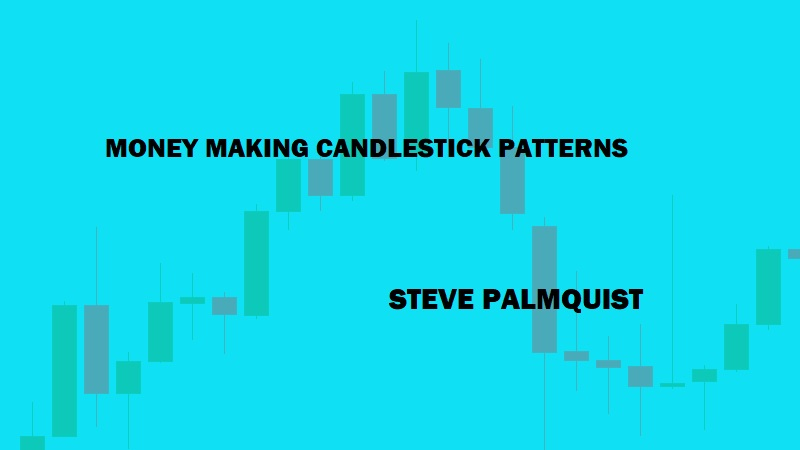Market Adaptive Trading Techniques : Using Trend Lines
MAP Step three, Market adaptive techniques, Trading in market adaptive techniques summary
Course: [ MONEY MAKING CANDLESTICK PATTERNS : Chapter 8: Market Adaptive Trading Techniques ]

Market Adaptive Trading Techniques refer to a set of strategies used by traders and investors to adjust their investment decisions based on changes in market conditions. These techniques are designed to take advantage of market volatility and changes in market trends, with the goal of maximizing profits and minimizing losses.
MAT STEP THREE: USING TREND LINES
The
third step in market adaptive trading is using trend lines on the NASDAQ chart
to determine which tool to use and when to reduce risk. Trading patterns such
as the bullish engulfing and hammer patterns that have shown good testing
results in bull markets should be considered when the market is trading above
an ascending trend line. Trading patterns that have shown good test results
when the market is bearish, such as the hanging man and the bearish engulfing
patterns, should be considered when the market is trading below a descending
trend line.
Selecting
tools from the trader’s tool box based on whether the market is trading above
an ascending or below a descending trend line can keep traders using the best
available tools as the market cycles between its three basic modes. There is no
guesswork or emotion involved in the process. The third step of market adaptive
trading simply matches well-tested tools to the current market environment
using trend lines.
TREND LINE BREAKS ARE A CALL TO ACTION
Figure 8.7 shows an eight-month period in
which the market showed bullish and bearish periods, yet it ended up at about
the same level that it was when the period started. Many buy and hold investors
would be at about the same place where they started the eight-month period.
Short term traders had significant opportunities to profit from both the
bullish and bearish environments by using trend lines for guidance.
FIGURE 8.7: MARKET TRADING RANGE

As
shown in Figure 8.7 bullish and bearish
periods in the market tend to end with trend line breaks. When the market was
trading beneath the descending trend line during July and August, traders
should have focused on trading short setups and avoiding longs. The research in
the previous chapters has identified patterns that perform better in bearish
environments and also patterns that should not be used in bearish environments.
At
some point all trend lines are broken. During the market period shown in Figure 8.7, the bearish period, marked by the
descending trend line, ended in the middle of August with a trend line break
(marked by the down arrow). The bullish period also ended with the break of an
ascending trend line in late December.
A
trend line break is not necessarily the end of the current trend, but it is a
call to action. When a descending trend line is broken, the market may begin a
new uptrend, or it may base for awhile before picking a new direction, or in
some cases it may be a false breakout and the original trend may continue. One
of the keys to market adaptive trading is to realize that a trend line break
indicates that something has changed, and the trader must react to it.
After
a trend line break, there is a period of uncertainty while the market picks its
next direction. Uncertainty in trading implies increased risk. Traders should
compensate for increased risk by reducing position sizes and also the number of
positions being traded. Once the market makes its next direction clear, traders
can return to the original position sizes and number of positions traded.
The
break of a descending trend line indicates that a change may occur, not that a
change will occur. After the break of a descending trend line, a new uptrend is
not confirmed until the market shows confirmation by making a higher low and
then a higher high. At this point a new ascending trend line may be drawn since
an uptrend is by definition a series of higher highs and higher lows. Again,
traders should maintain a lower risk profile until the market confirms its new
uptrend.
Figure 8.8 shows a close-up view of the
market’s action after the break of the descending trend line shown in Figure 8.7. After the initial trend line break
(noted by the down arrow), traders should reduce risks and look for
confirmation of the market’s next move. The market moved up for seven sessions
after the break of the descending trend line, pulled back for two sessions, and
then moved up for seven sessions. After this three week period, the market had
formed a higher low and a higher high as noted by the up arrows.
FIGURE 8.8: LOOKING FOR THE HIGHER LOW AND
HIGHER HIGH AFTER THE BREAK OF A DESCENDING TREND LINE

Once the market has made a higher low and a
higher high, it is by definition in an uptrend. At this point traders may
become more aggressive and trade patterns that have tested well in bullish
environments. Traders should then draw a new ascending trend line using the
lowest low under the original descending trend line and the new higher low, and
trade bullish patterns until the ascending trend line is broken.
The
reason for reducing risks after the break of the descending trend line is that
the market does not always go directly to a bullish environment after the break
of a descending trend line. It may move up a few days and then continue down,
or it may move sideways for a bit and then continue down. Figure 8.9 shows a time when the market broke
above a descending trend line for a few days and then continued down. In this
case trading at reduced risk levels on the long side after the break of the
descending trend line would have been a good way to minimize losses and protect
previous profits.
FIGURE 8.9: NOT ALL DESCENDING TREND LINE
BREAKS ARE THE START OF A NEW BULLISH PHASE

Reducing
position sizes and the number of positions traded during this period would help
to preserve profits. Also, if the market moves sideways for a bit, the
environment is often not friendly to traders. Waiting for confirmation reduces
the money at risk while the market is makes up its mind on what it wants to do
next.
Figure 8.10 shows the break of an ascending
trend line. Traders should be focused on trading long patterns that have been
shown to be effective in bullish markets while the market is above the
ascending trend line. When the trend line break occurs, it indicates that the
market conditions may be changing. Because of the trend line break, there is
more uncertainty in regards to which direction the market will move next.
Traders should respond to uncertainty by reducing risk.
FIGURE 8.10: ASCENDING TREND LINE BREAK
Courtesy of AIQ

After
the break of the ascending trend line, traders should begin to look for signs
that would confirm a new trend. If the market makes a lower low, and a lower
high, then by definition it is downtrending; and, traders should draw a new
descending trend line from the recent high above the ascending trend line to
the new higher high that forms below it. Once the market confirms a new
downtrend, traders should focus on trading shorts using patterns that have
tested well in bearish environments.
If
instead of establishing a new downtrend the market just drops for a bit and
then continues up, traders should draw a new ascending trend line using the new
low formed once the market makes a higher high and confirms that it is back in
an uptrend. One of the tricks to trading is not to care which way the market
goes, or to get all caught up in trying to predict direction. It is important
to just observe the market and adjust your risk levels to what it does.
DEALING WITH TRADING RANGE ENVIRONMENTS
The
market is not always in a clear up or down trend, sometimes it is range bound
and just moves back and for the between two levels for awhile. An example of
this type of trading range market is shown in Figure
8.11. There are two types of trading ranges, and the trader must respond
differently to each one.
FIGURE 8.11: TRADING RANGE MARKET Courtesy of
AIQ

A
narrow trading range, when the market moves between support and resistance in
less than four days, should be avoided. Narrow trading ranges do not provide
enough time for swing trades to work. The good news is that they do not happen
often and are usually followed by strong moves that provide much better trading
opportunities.
Wide
trading ranges, where it takes the market more than four days to move between
support and resistance can be traded by switching between long and short
patterns using the following procedure:
- When the market bounces off the bottom of the range, take long trades.
- Close long trades when the market approaches the top of the range.
- When the market retraces from the top of the range, take short trades.
- Close shorts when the market approaches the bottom of the range.
In
trading range environments, I try to pick off the initial pop when a setup
triggers. This is not an environment where you want to “give
them room to run.” I usually need a good reason to hold for more than
three days. For example, if the market and my stock are moving up on increasing
volume, I would hold longer.
The
reason for taking quick profits in trading range markets is that almost by
definition most stocks cannot run very far when the market is in a trading
range. The market is the sum of a large number of stocks. If most of them were
triggering and running for awhile, then the market would sum all these runs and
have to be trending up. Trading ranges exist because most stocks run for a few
days and then pull back, and a lot of stocks doing this results in the market
moving up and then retracing. Because most stocks tend to “pop and drop” when the market is in a trading
range, I want to use short holding times to just pick off a series of “pops” in different stocks. This means I’m piecing
together a trend in my account while the market is oscillating back and forth.
MONEY MAKING CANDLESTICK PATTERNS : Chapter 8: Market Adaptive Trading Techniques : Tag: Candlestick Pattern Trading, Forex : MAP Step three, Market adaptive techniques, Trading in market adaptive techniques summary - Market Adaptive Trading Techniques : Using Trend Lines





